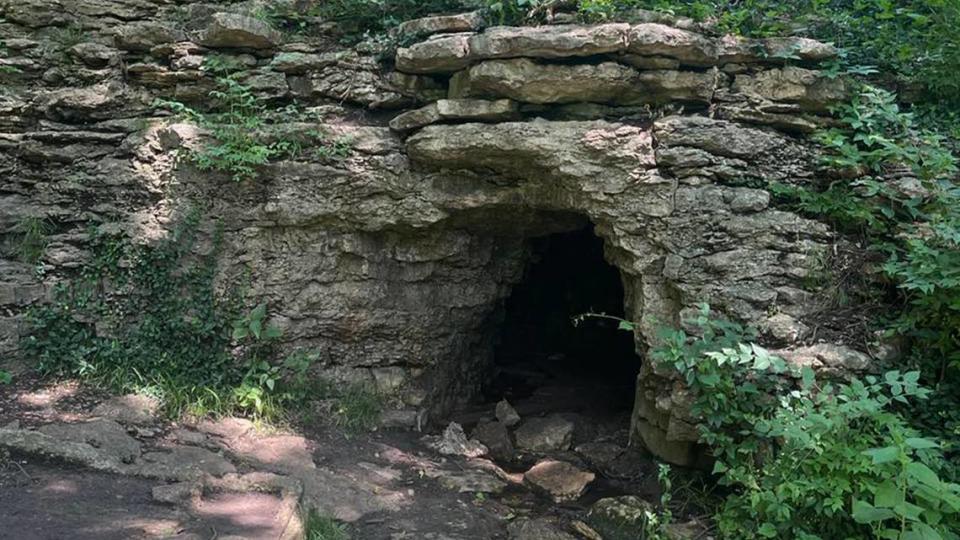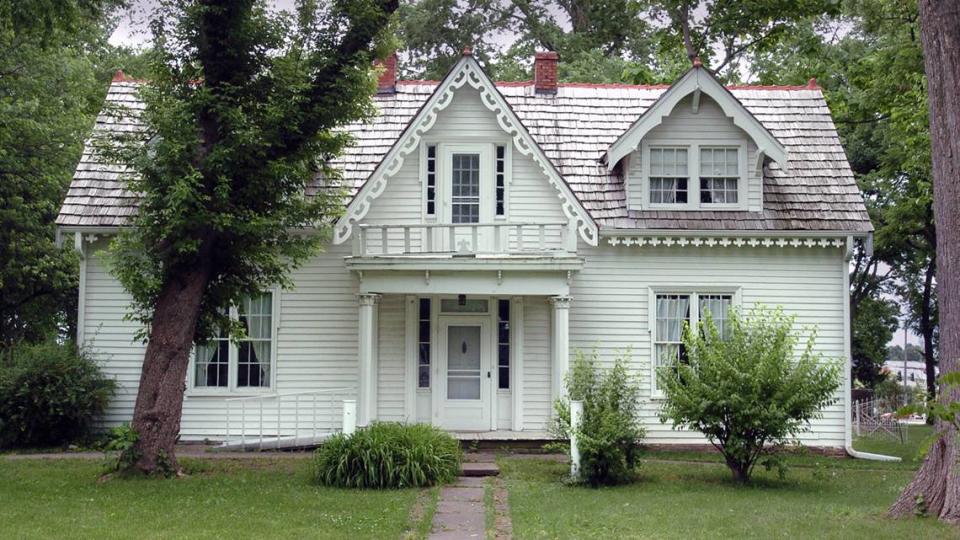Did the Underground Railroad run through KC’s Swope Park? This historian thinks so | Opinion
In her 1975 book “Jackson County Pioneers,” author Pearl Wilcox writes: “A patrol fence was maintained west of Swope Park, six miles east of the Kansas territory. To the ordinary observer it meant nothing more than a barrier to prevent stock from straying, but to a slave who passed this limited boundary it meant freedom.”
The passage raises a fascinating question: Did the Underground Railroad run through Swope Park, one of Kansas City’s best-known attractions?
I spoke in great detail with Kansas City-area historian Erik Keith Stafford about this possibility and how it correlates to Juneteenth, a national holiday commemorating the ceremonial end to slavery. My hope is that Mayor Quinton Lucas or the City Council commissions a group to study the topic.
In an email, officials with the Kansas City Parks and Recreation Department told me nothing in their archives indicates enslaved African Americans used city parks to escape bondage in Missouri. But research Stafford recently unearthed may tell a different story.
“Our archivist investigated this for you and couldn’t find anything related to Swope Park or any of the parks that are related to the Underground Railroad,” a spokesperson for the parks department wrote.
Civil War activity — 1864’s Battle of Westport — occurred in what is now Swope Park, officials said, a well-known battle that eventually led to the incorporation of Kansas City. What may escape the average Kansas Citian is that Swope Park could have been a route used by runaway slaves in eastern Jackson County to escape to the free state of Kansas, according to Stafford, operator of Kansas City Tour Company’s Black history bus tour.
Say what? Historical documents could back Stafford’s claim.
In “Pioneers,” Wilcox recounts the tale of an escaped slave from Jackson County captured near the state line. She writes: “One valuable slave gained his liberty because he was fleet-footed like a deer. While halfway across the strip, he was sighted by a mounted guard who gave pursuit. The Negro, long of limb and in full health of young manhood, ran swiftly.”
What Wilcox penned next describes the rough terrain of Swope Park, Stafford said.
“Over the hills and down the valleys he darted, in and out through the thick brush, with unbelievable speed,” she continued. “On reaching the line, perspiring heavily, his clothing torn to tatters, he fell exhausted upon the ground, half his body in Kansas and half in Missouri.”
The connection is evident, Stafford said. After pouring over his extensive notes on the subject, I would agree.
Bus tour teaches Black area history
I first met Stafford in the early 1990s. We both attended the University of Central Missouri in Warrensburg. Our paths crossed again recently.
For years, Stafford has used the Black history bus tour to educate guests about the area’s ties to slavery and other historical facts. He knows his stuff. Regular stops include the historic 18th & Vine Jazz District and the ruins of the old Quindaro township in Kansas City, Kansas. That site was used as an Underground Railroad stop for slaves escaping captivity in Clay and Platte counties via the Missouri River, Stafford said.
But this recent discovery could prove groundbreaking if he is able to link the Underground Railroad to Swope Park and eastern Jackson County. In order to seek freedom in Kansas, a slave in Missouri would find the water system useful, according to Stafford and other historians who track the history of slavery in Missouri.
In Jackson County, the Blue River would have served as an important waterway for runaway slaves, he said.
Could Stafford be onto something? It would not be out of the realm of possibility that enslaved people would have known to follow the Blue River into the Kansas territory, according to historian Diane Mutti Burke, chair of the University of Missouri-Kansas City history department.
In the 1800s, a runaway slave belonging to James J. Chiles, a ruthless slave owner from Jackson County, was captured near the Kansas-Missouri border, according to Stafford. Chiles was from a prominent family. His father, Col. James C. Chiles, was a well-connected politician in Jackson County who repeatedly bailed his son out of trouble.
The younger Chiles was merciless, whipping enslaved Black people for sport, historians say. He was a murderer, too, historical documents indicate.
In search of freedom, Chiles’ slave could have traveled west along the Missouri River from Independence into Raytown and used the Santa Fe Trail to connect with the Blue River in Kansas City before he ended up near the state line, Stafford said.
The slave Chiles owned cleared the patrol fence just west of Swope Park but passed out at the Kansas-Missouri border, according to Wilcox’s book. As slave hunters and anti-slavery soldiers from Kansas debated whether the man was in free territory or not, he came to and fled toward Kansas in a search of freedom, Wilcox wrote in “Pioneers,” a collection of little-known stories from the Civil War period.
From there, the slave followed the Blue River into neighboring Kansas, where he was captured near Negro Creek in Leawood, Stafford theorizes. How did he get to the creek? He didn’t fall out of the sky, he said.
“It was there at Negro Creek that he decided it was best he take his life rather than go back and be a slave,” Stafford said in a recent video posted to YouTube.

Tracing escaped slave’s path to Negro Creek
Negro Creek runs south through Johnson County and the cities of Leawood and Overland Park. The waterway is part of the Blue River Watershed.
Exhaustive searches have yet to yield a consensus on how the creek’s name came to be. Researchers commissioned by Johnson County officials determined slavery and racial violence led to the degrading name. Mutti Burke led the study.
More confirmation is needed, but it’s difficult to dispute the possible connection of Swope Park, Negro Creek and the Underground Railroad.
“The creek is a tributary of the Blue River and the Blue (River) flows through Swope Park,” Mutti Burke said.
An 1879 column in the Western Progress, a Spring Hill newspaper, ties the runaway slave from Jackson County to Chiles. The opinion piece read: “Stanley is located at the head of ‘(epithet) Creek.’ Some of the curious may want to know why the stream is called by that name. As the poet would say, ‘thereby hangs a tale.’ In 185--, James Chiles, of Jackson count, Missouri, had a negro man to ‘run off,’ they followed and surrounded him on the stream running to Stanley to Blue, when finding they would capture him he drew a knife and cut this throat from ear to ear. From that day to this it has been known as (epithet) Creek.’ Of course the proper name is negro, but we being Democrats down here, (for short) spell it with two ‘g’s.’”
Should the name Troost Avenue remain on street signs? Yes, Stafford told me during a recent stop at the Rice-Tremonti Historic Home in Raytown. We met at the site along the historic Santa Fe Trail to discuss local Black history.
What about Negro Creek — should it keep its name? Stafford is not opposed to a recent Johnson County working group’s decision to leave the name as is. Negro Creek, which flows through Ironhorse Golf Course on the Kansas side, is a few miles long and flows into the Blue River in Missouri.
Not everyone agrees with community activists who want to remove street names honoring slave owners or other area monuments disparaging and offensive to Black people, he said.
“This is history,” said Stafford, an African American. “Leave it up and tell the truth about it. That way, we learn and heal.”
I can’t say that I agree with the history buff, educator and poet. Neither do my colleagues on The Star’s editorial board. In a May editorial, we questioned if keeping the name intact was the right thing to do.
Slaveholders and racists don’t deserve to have their names adorned on street signs, parks or any other public monuments, we have argued. Why should we exalt anyone who owned other humans or participated in the systematic oppression of others?

Raytown’s Rice-Tremonti home tells a story
Stafford runs through the history of the Rice-Tremonti home with relative ease. The property features the adjoining Aunt Sophie’s slave cabin and is one of the last remaining pre-Civil War houses in the Kansas City area, according to the nonprofit that operates the the six-acre site in the 8800 block of East 66th Street.
Stafford grew up nearby. As a student at Raytown South High School, he never learned about the families who owned the property during the height of slavery.
Nor did educators teach him about Swope Park’s possible connection to the Underground Railroad. To learn this history as an adult was both gratifying and mystifying, Stafford said.
“It was a smack in the face because it was so obvious,” he said. “I had always known about Aunt Sophie’s slave cabin but never connected it to the Underground Railroad. As a historian and tour guide, my focus had always been on the Underground Railroad and slaves from Platte and Clay (counties) going through Quindaro and never focused on Jackson County in my own backyard.”
To teach others of this remarkable tie-in, Stafford plans to add to the tour schedule a trip to Lake of the Woods, a campground with miles of hiking trails deep in the woods of Swope Park. If he does, you can bet I will be one of the first people in line to sign up.
Will you join me on the trek?

